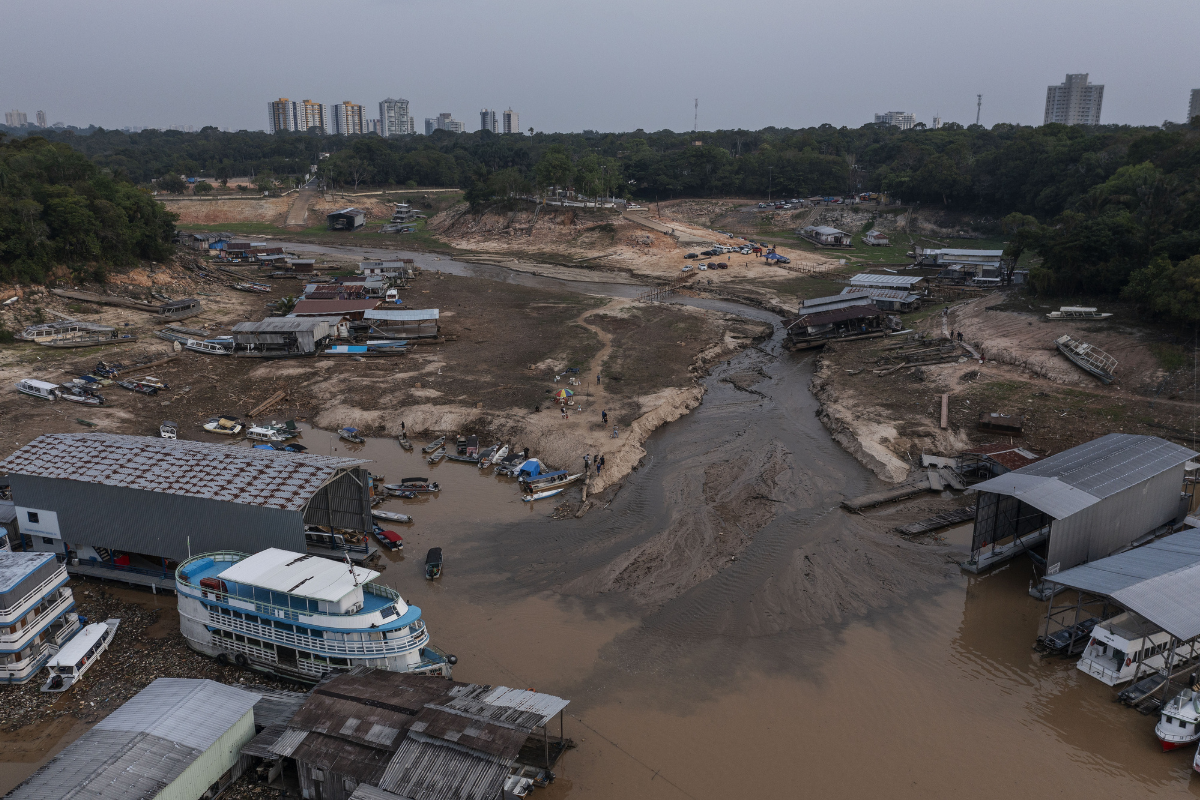A shocking new all-time river low suggests that the current drought in the Amazon may be the worst in history. The Negro River, one of the most important rivers for passenger and cargo transportation in the Amazon, has reached 13.59 meters, its lowest level on record, according to data from the Port of Manaus.
The Negro River’s previous all-time low in 121 years of measurement was recorded in 2010 — 13.63 meters.
Covering more than 12 million hectares, the Negro River basin is the world’s largest Ramsar site, a measure that recognizes ecologically valuable wetland habitats. The site includes more than 20 conservation units, and its biodiversity encompasses endangered species of mammals such as the giant river otter, the Brazilian bare-faced tamarin, and the white-bellied spider monkey.
Experts have attributed the current drought to the effects of climate change and to a stronger-than-usual El Niño weather phenomenon.
Appearing every few years at irregular intervals, El Niño consists of the warming up of a large patch of water in the middle of the Pacific Ocean, releasing more heat than normal into the atmosphere and interfering with the atmospheric jet streams that typically dictate the world’s weather.
This El Niño, which has turned the Amazon into a tinderbox, could last until March 2024.
Part of passenger transport and the flow of industrial production through the Negro River have been suspended. According to the Brazilian cabotage shipowners association, around 50 percent of supplies to Manaus, the state capital of Amazonas and the Amazon’s biggest city, could be impacted.
The rest of the country might also face shortages of products produced in the Manaus duty-free zone. This could impact Black Friday sales for e-commerce vendors, given that Manaus is an important site for the production of electronic goods.
“The annual drought is a natural phenomenon, but serious problems such as illegal mining, poorly-done dredging in the Madeira River (or, in most cases, non-existent dredging), and a lack of planning by the government make the situation unsustainable,” a statement from the association reads.
Of the 62 municipalities in Amazonas, 50 are in an emergency situation and 10 are on alert, the local government informed. In Manaus, wildfires have spiked — forming a white fog that covers the city, which has seen air quality drop to “hazardous” levels in recent days, according to the World Air Quality Index.
Drought and high water temperatures (which reached 39ºC) are also causing unprecedented mortality rates among river dolphins, a famous species of the Amazon region. More than 100 dead dolphins have been found in recent weeks.The Amazon region has been recording below-average rainfall since May, and it is expected to continue at least until December.


 Search
Search






































